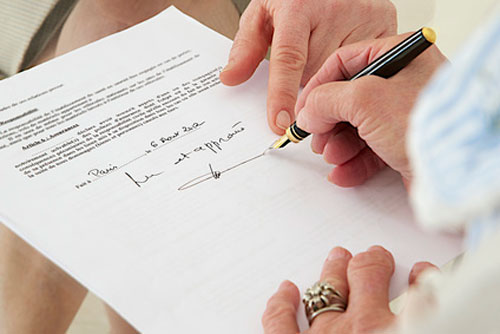The Anatomy Of A Rental Lease
Being a real estate landlord or professional property
manager has it’s challenges. One of which is the leasing of a rental property.
In this article, I will highlight the overall process then when it gets to the
lease, I will go into some of the key elements you should have in any lease.
First is the high level overview
View
Available Rental Properties–Most renters will want to walk the
property before deciding to lease or not. In some cases, someone may not have
that option (such as job move). Viewing the property is an important step to
make sure that the property will meet their needs and tastes.
Online
Rental Application–next step is to complete an application. If
the landlord is using a property management software, the application can
usually be completed online by the applicant. An online application will save
the landlord time and make this step a bit easier.
Background
Screening – Assuming the application is acceptable, the next step
should be running a background check on the applicant. Background checks are
very important for protecting your investment, limit owner liability, keep
existing tenants happy and many other benefits. Background checks should
include Credit, Eviction and Criminal searches.
Rental
Agreement – a rental agreement is used for short term rentals,
typically less the a month or two.
Rental
Lease– Leases are contracts for longer term agreements. Once the
applicant passes the background screening, you are ready to generate a lease. A
lease generally consists of:
·
names of the landlord and tenant(s)
·
the starting date and duration or end date of
the agreement
·
the address of the leased property
·
options for lease renewal, if any
·
rent payments, including amounts and due dates
·
security deposits
·
late charges and terms
·
utilities
·
list of occupants
·
pets – allowed or not
·
the right of entry and inspection
·
parking
·
noise and any "quiet" hours
·
property maintenance
·
lease termination clause
·
renters insurance
Collecting
Rent – Nowadays, there are many options for collecting payments
electronically. Selecting a property management software that has this
functionality built in will reduce the workload off of the landlord or property
manager. Once the e-payment system is setup, you should be able to receive
payments from tenants through a mobile app, pay vendors for repairs, pay the
property owner their net profits (if you are a property manager) and receive
transfers from property owners to add funds to their operating account. All
these various ways for transferring money from and to different parties, streamlines the process for everyone as well
as reducing errors.
About PropertyZar
PropertyZar is a real estate technology company specifically
in the web-based property management software for owners and professional
property managers. PropertyZar property management software offers a
comprehensive solution for leasing, application management, resident screening,
and electronic payments.Learn more www.PropertyZar.com
Content is originally
posted at https://www.propertyzar.com/the-anatomy-of-a-rental-lease/



Comments
Post a Comment